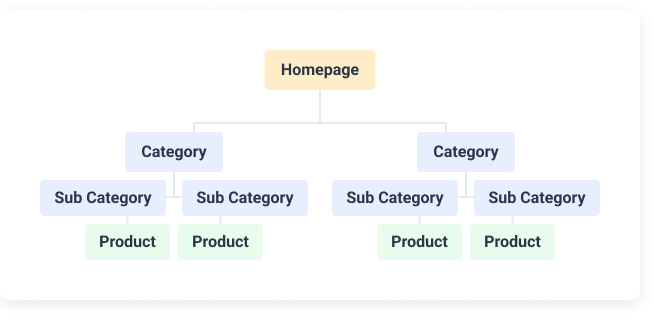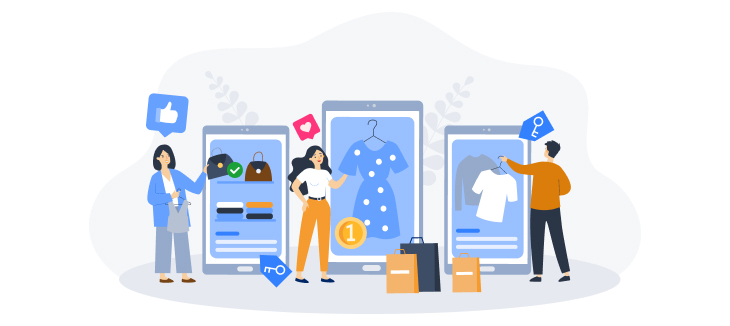What Is E-Commerce and How Can You Build a Successful Online Store?
01 Mar, 2022

E-commerce has become one of the most powerful ways for small and medium-sized businesses to grow. Unlike a physical shop, an online store has no opening hours, no geographical limits, and often far lower fixed costs. With the right setup, you can reach customers 24/7 around the world.
But building an online shop that truly works goes beyond simply listing products. Success depends on structure, content, user experience, SEO, and visibility across different platforms.
This article will walk you through the essentials of creating a strong e-commerce presence.
How Should an Online Store Be Structured?
A clear structure is the foundation of every good online store. Visitors should always know where they are and how to find what they need. The most effective hierarchy looks like this:
Homepage → category pages → product pages

Why this works:
- It’s simple and intuitive for users.
- Search engines reward user-friendly navigation.Category pages can build long-term visibility, while product pages convert visitors into buyers.
Content That Converts: Writing for People and SEO

Search engines still rely heavily on text, but content is not just about keywords. The goal is to provide real value for your visitors, depending on where they are in the customer journey.
- Research phase: Write informative content that educates (e.g. guides, FAQs).
- Decision phase: Provide detailed product information and persuasive arguments to buy.
Avoid keyword stuffing or aggressive sales tactics. Inform first, sell later — this builds trust and improves rankings.
Category Pages: Long-Term Traffic Drivers

Category pages (e.g. “Women’s Shoes”) are often more stable than individual product pages and can rank for broad keywords.
Best practices:
- Keep the intro text short but relevant.
- Highlight the value of the category (what kind of products, for whom, why).
- Add internal links and a clear CTA to move visitors towards products.
Remember: For many customers, the category page is the first touchpoint with your brand.
Product Pages: Where Decisions Are Made

Product pages are where sales happen, so they need extra care:
- Detailed descriptions: Explain benefits and uses in clear, simple language.
- Long-tail keywords: Answer specific questions (e.g. “How to cut an avocado safely?” for a kitchen tool).
- Media: High-quality images, videos, and zoom features help customers imagine owning the product.
- CTAs: Guide the next step (“Buy now”, “Add to cart”, “Sign up for alerts”).
- Trust signals: Include reviews, guarantees, and transparent return policies.
Pro tip: Use structured data (schema markup) so that your products can appear with rich snippets in Google search.
Top 8 SEO Basics for Online Shops
- URL: Keep it short and include the main keyword
- Keywords: Focus on long-tail informational keywords
- Meta tags: Start titles and descriptions with your keyword
- Page speed: Use Google PageSpeed Insights to test load times
- Mobile optimization: Make sure your site works well on smartphones
- Backlinks: Earn links from trustworthy websites
- Duplicate content: Avoid or remove duplicate pages
- Shopping cart: It should be visible on every page
Building Trust Through Reviews

Customer reviews are crucial for both SEO and conversions. People rarely buy without checking others’ experiences.
You can:
- Collect reviews directly on your store.
- Use third-party platforms like Trustpilot or Trusted Shops.
- Showcase positive reviews on product and category pages.
Authentic feedback increases trust and reduces purchase hesitation.
Expanding Your Reach: Google Merchant Center
If you want your products to appear in Google Shopping results, Google Merchant Center is your friend. By uploading your product feed, you can:
- Reach buyers actively searching for products like yours.
- Gain extra visibility beyond your store.
- Combine SEO with paid ads for more impact.
Always optimize product titles, descriptions, and images in your feed for maximum exposure.
Selling on Amazon and Other Marketplaces
Amazon is one of the biggest product search engines in the world. Selling there gives you:
- Instant access to millions of potential buyers.
- Built-in trust through Amazon’s reputation.
- Reduced effort in driving your own traffic.
But competition is tough, and SEO also matters here. Optimize your Amazon listings with:
- Clear titles including keywords.
- Engaging descriptions.
- High-quality images and videos.
- Reviews and ratings to stand out.
Final Thoughts
E-commerce offers enormous opportunities, but success doesn’t happen by chance. You need:
- A clear and intuitive store structure.
- Helpful, well-optimized content.
- Strong product pages with visuals and trust elements.
- SEO foundations that keep traffic flowing.
- Visibility on Google Shopping and marketplaces like Amazon.
If you want extra support, tools like rankingCoach can help with SEO, competitor analysis, and visibility management across channels.
Start building your online store with these strategies, and you’ll be ready to compete — no matter how crowded the market is.
